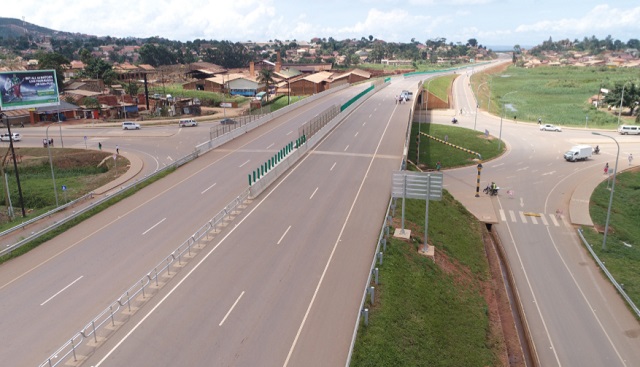
Why the Expressway has not really eased the traffic
Kampala, Uganda | JULIAN E. SABIITI | On the face of it, the Kampala-Entebbe Expressway has not lived up to its purpose – so far. Since President Yoweri Museveni officially launched it for public use it has attracted very little traffic.
The four-lane dual carriage expressway was designed to be a toll road with users paying to drive on it. But for 15 months now it has been open to the public at no cost although the toll booths are in place at Busega where it starts and at midpoints at Kajjansi and Mpala which have exits.
Isaac Menya, an engineer of the Uganda National Roads Authority (UNRA) told The Independent that just 13,720 vehicles on average use the road per day while the old Kampala Entebbe road clocks in about 109,005 vehicles per day. That is a whopping difference of 95, 285 cars in daily traffic between Kampala and Entebbe. Whether that is by design or accident, however, it might be good news.
According to its designers, the Kampala-Entebbe Expressway conceived as a way of reducing the bumper to bumper traffic that is typical on the old Entebbe Road; a narrow two partly dual carriage road that was first constructed in the 1960s colonial period. Despite numerous expansions, it has proved impossible to ease traffic flow on this road, which is the second busiest in Uganda.
At one point, the old Entebbe road was reported to have 635,656 vehicles annually in 2011 or just 1700 vehicles daily. But that changed dramatically as the economic environment improved and international travel by locals and foreigners became more necessary and common.
The growth in volume of traffic left residents and travellers along the old Entebbe road with stories of frustration over the traffic jams.
Isaac Kwebiiha understands firsthand what headache the Entebbe Road traffic causes for travellers to Uganda’s only international airport at Entebbe. He says he once got delayed at a meeting on a day he was supposed to fly out and realised he did not have the two hours he needed to be at the airport in time to catch his flight.
“I immediately knew driving was out of the question with the traffic on Entebbe road. I simply got onto a bike,” he told The Independent.
Expressway relieves frustration
Then there is Christine Iyura, a mother of one who lives in Entebbe and works in Kampala, who told The Independent about having to be on the road by 6am in order to hopefully be at work by 8.30am. Spending quality time with her four year old or a school drop-off was out of the question as there simply was never enough time.
Iyura says the opening of the Kampala-Entebbe Expressway has eased things a bit. She now uses the Expressway and the drive between Kampala and Entebbe that used to take two hours now takes 40 minutes. That is partly because vehicles on the expressway are expected to cruise at nothing less than 50km/h.
She loves the expressway because it is less congested and does not have the gaping potholes that characterize the old road. The smooth quality of the road means one can drive fast without worrying that much about bumping into something.
But Iyura says she still uses the old Entebbe Road more because, although only a few people have moved to the expressway, she feels like most people have moved there.
“This road is no longer congested either,” she says of the old road. She says she now drives to work within a maximum of one hour and has ample time to drop her daughter off at school and to get her into bed by 8pm. According to Iyura, although the Kampala-Entebbe expressway is less congested, it feels much the longer route at 51km compared to the 40km on the old road.
President Museveni officially opened the Entebbe Expressway to the public on June 15, 2018. Construction of the Entebbe expressway started in late 2012 and was completed in June 2018. Construction was done by a Chinese company, China Communication Construction Company and cost $476 million (Approx. Shs1 trillion) which, according to some people, makes it the most expensive road of similar scope in the east African region. It was financed in part by a loan from China through the Exim Bank of China ($350 million) and in part by the Government of Uganda ($126 million).
Initially the road launch was delayed because installing the toll-payment technology at the payment booths could not be done without parliament passing the law allowing construction and use of road tolls.
 The Independent Uganda: You get the Truth we Pay the Price
The Independent Uganda: You get the Truth we Pay the Price


